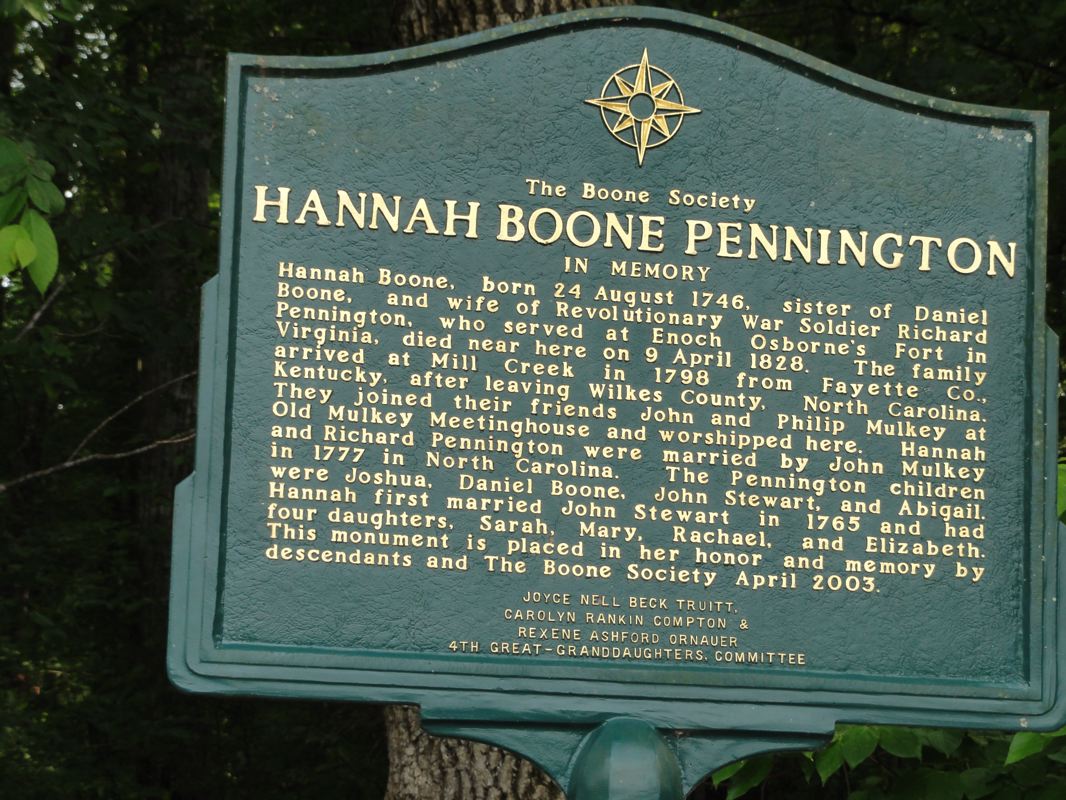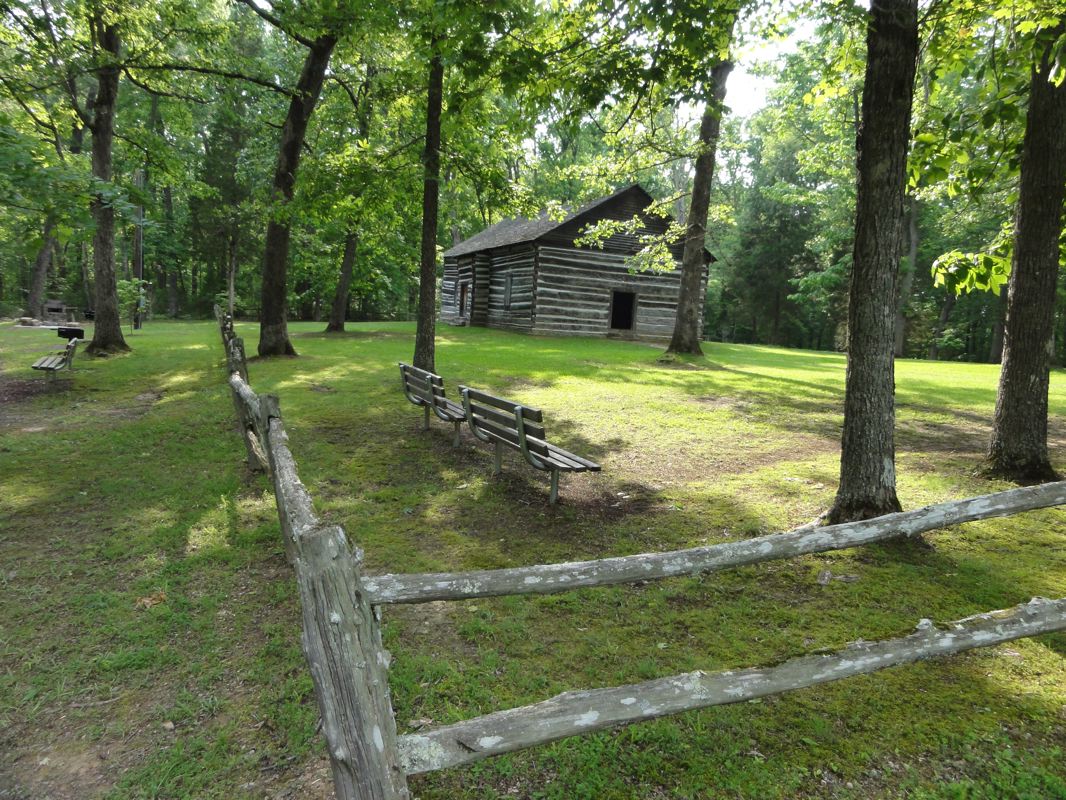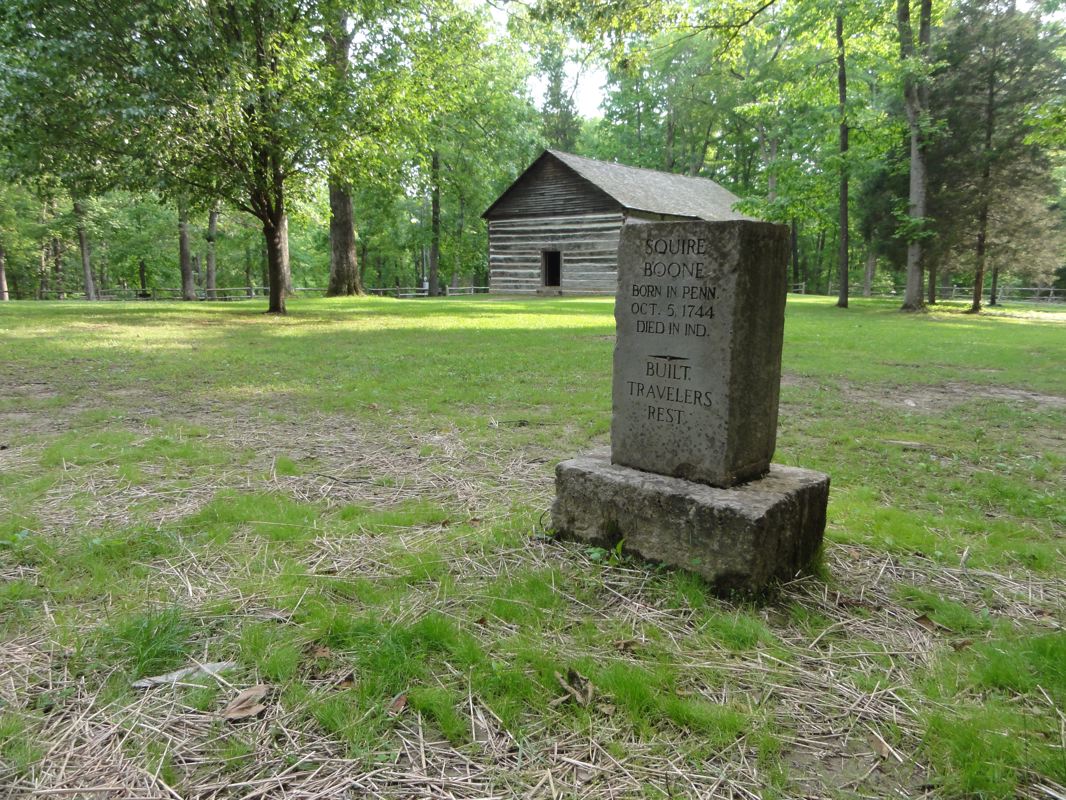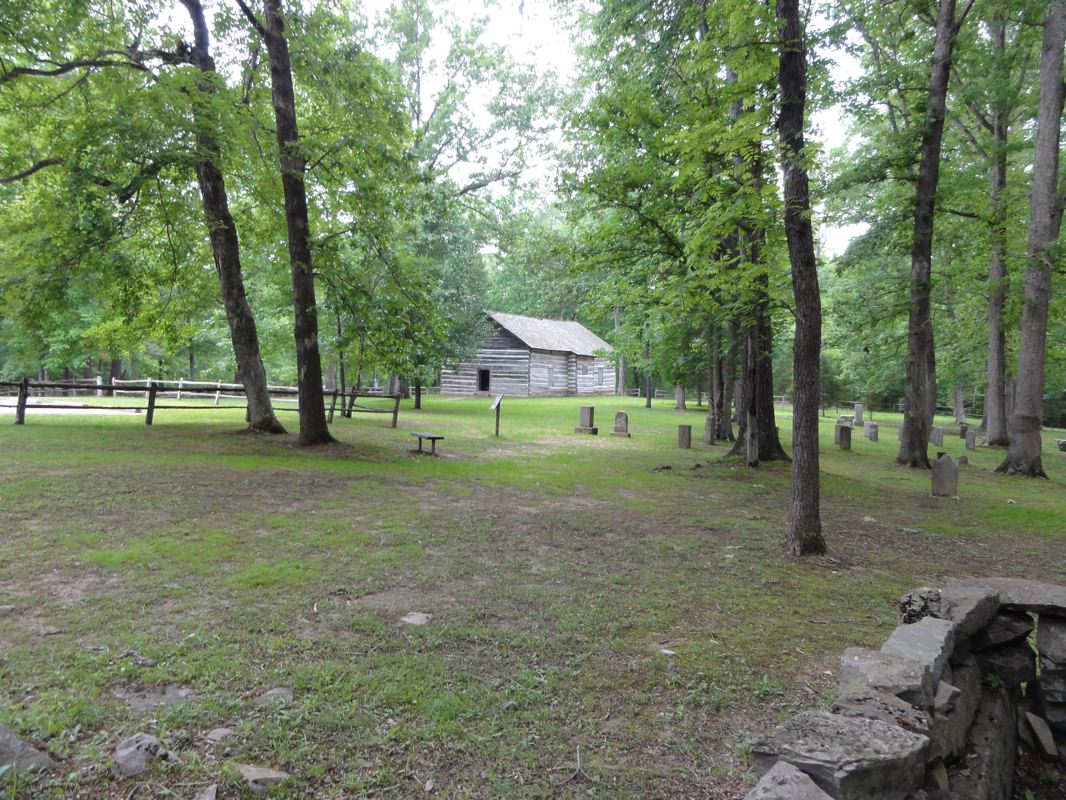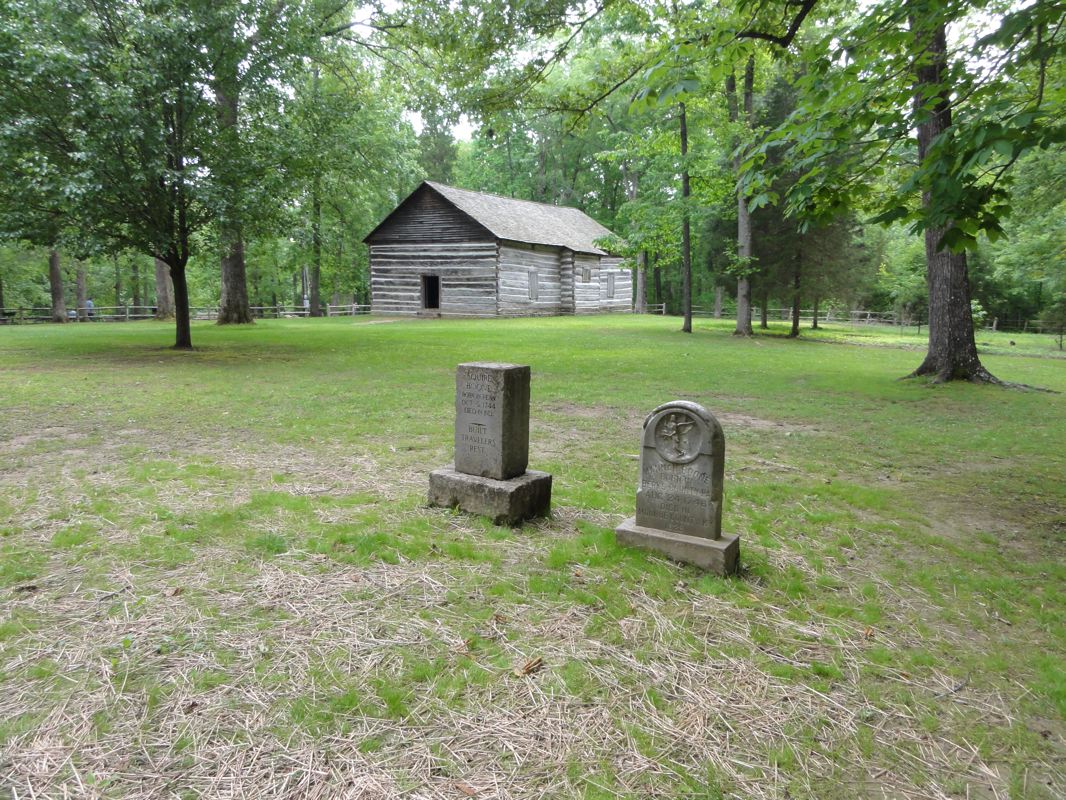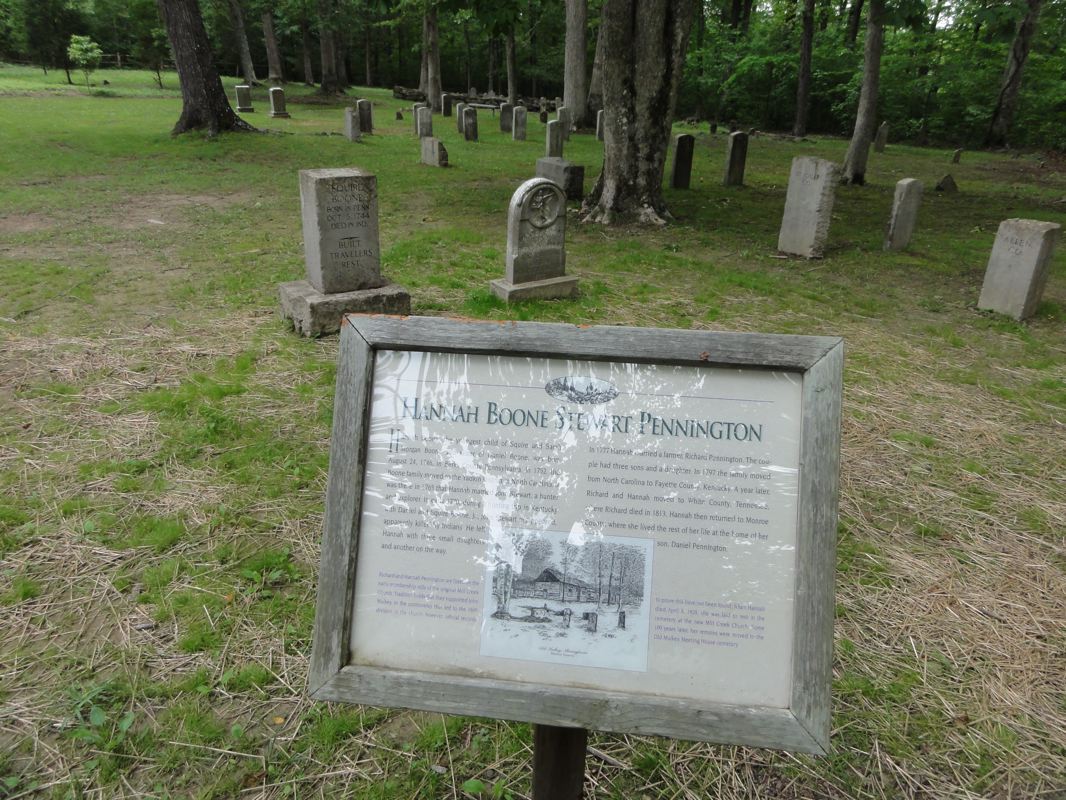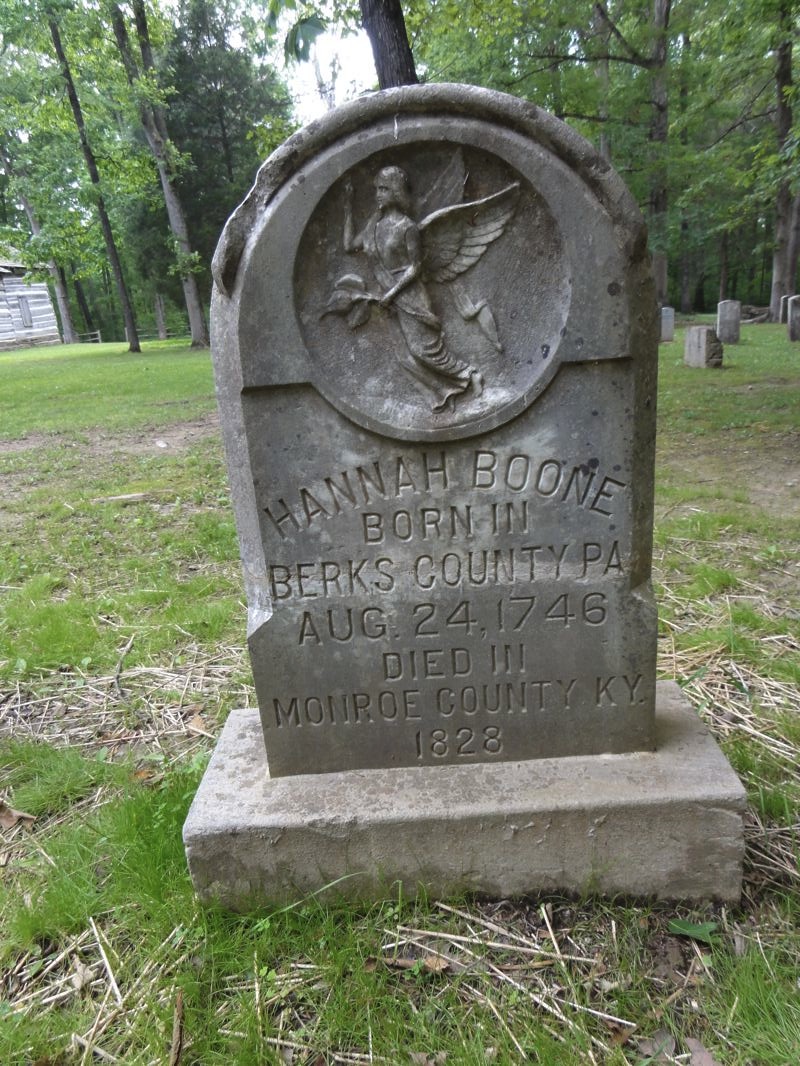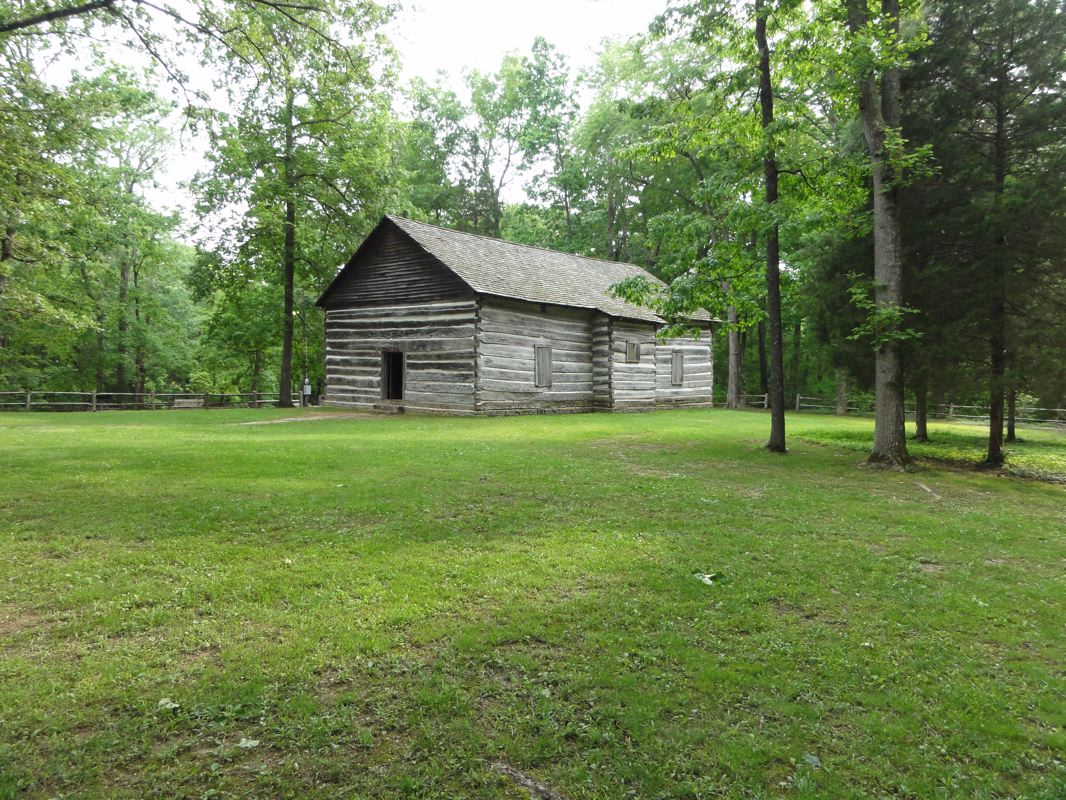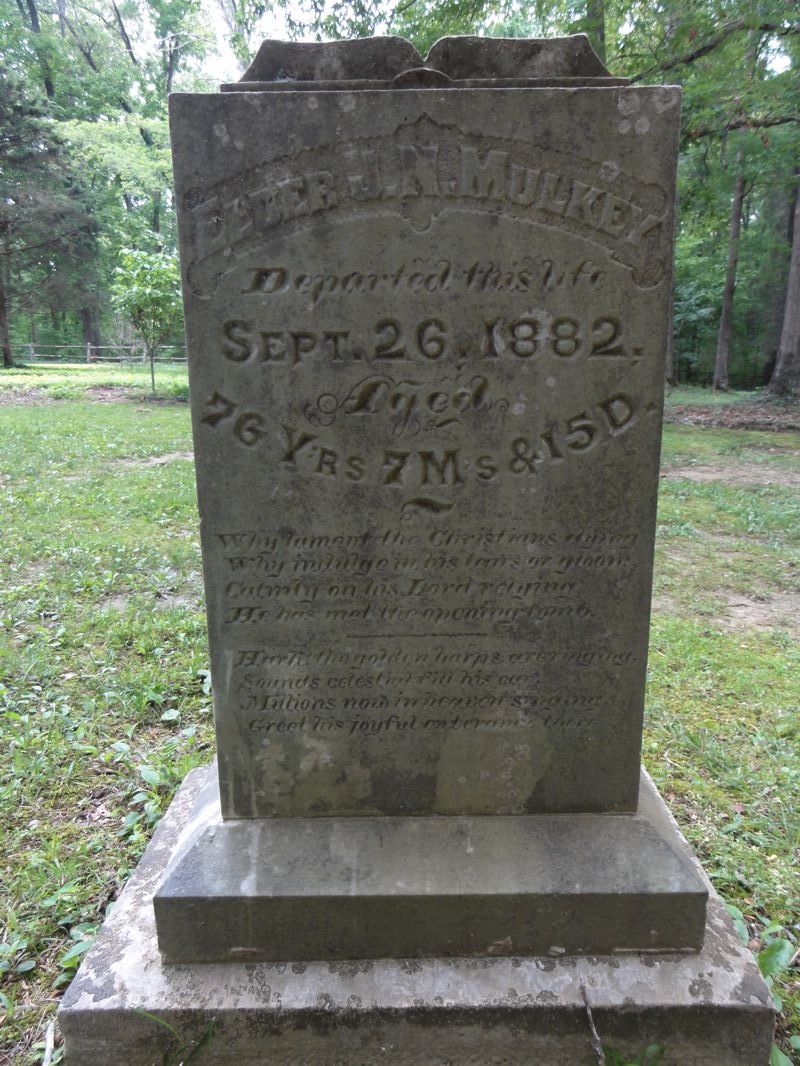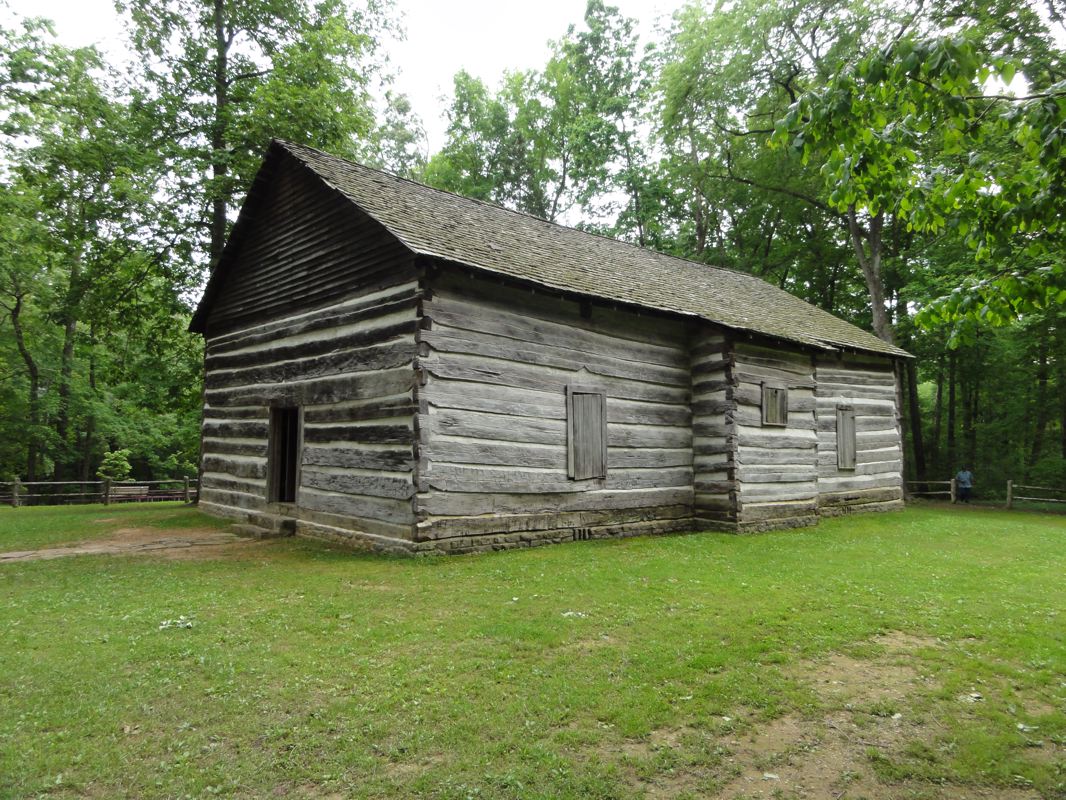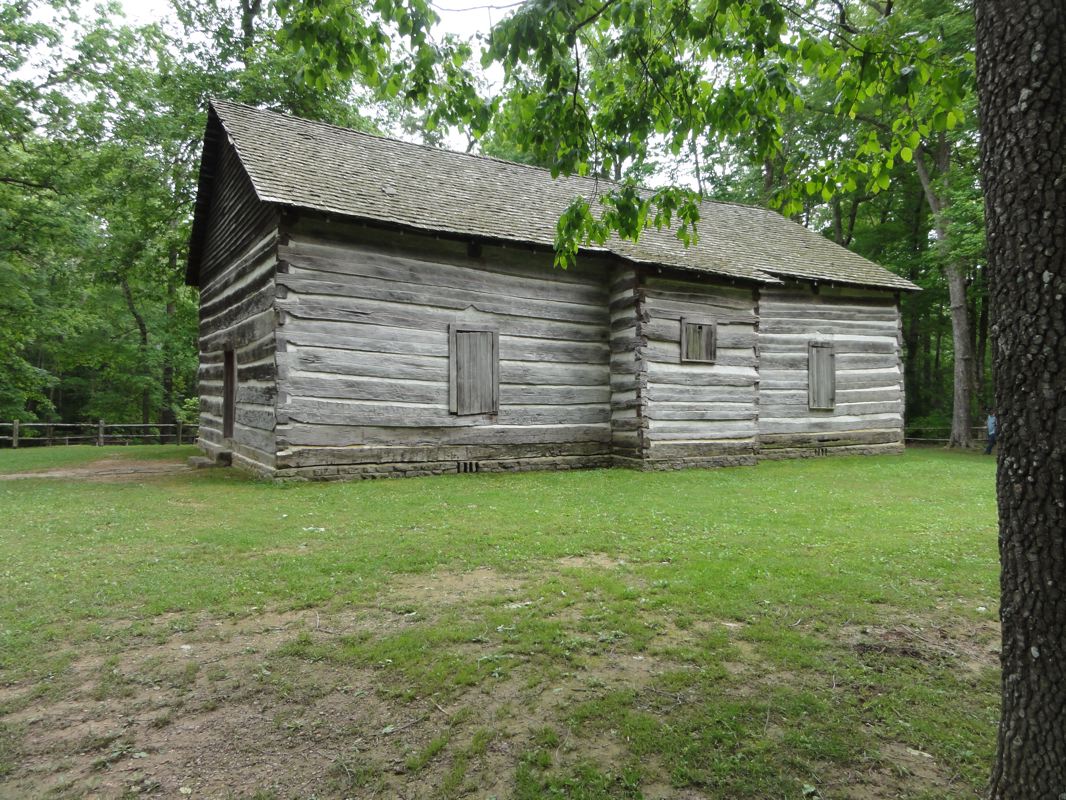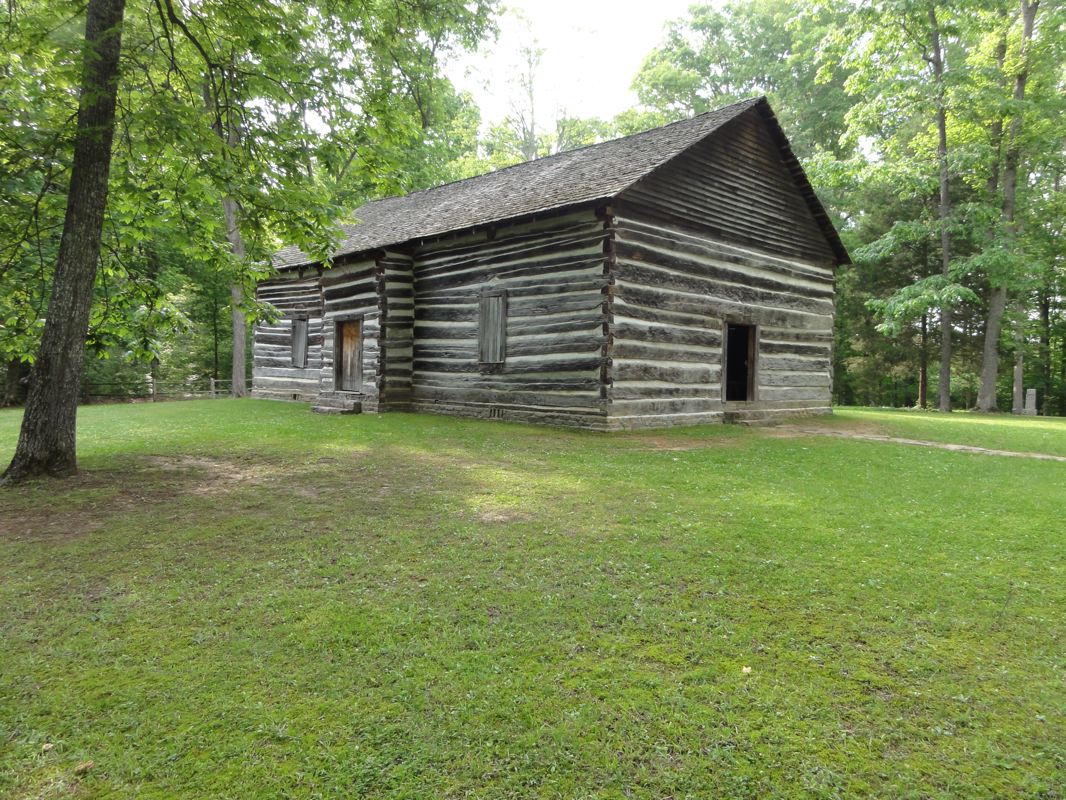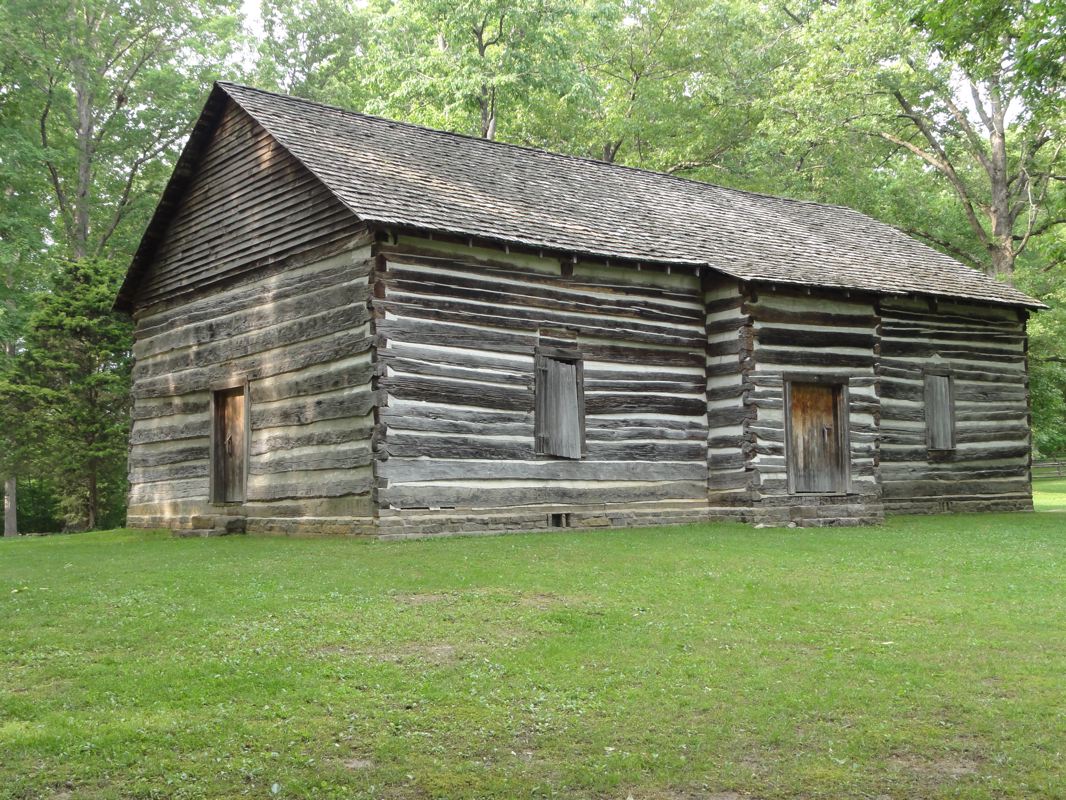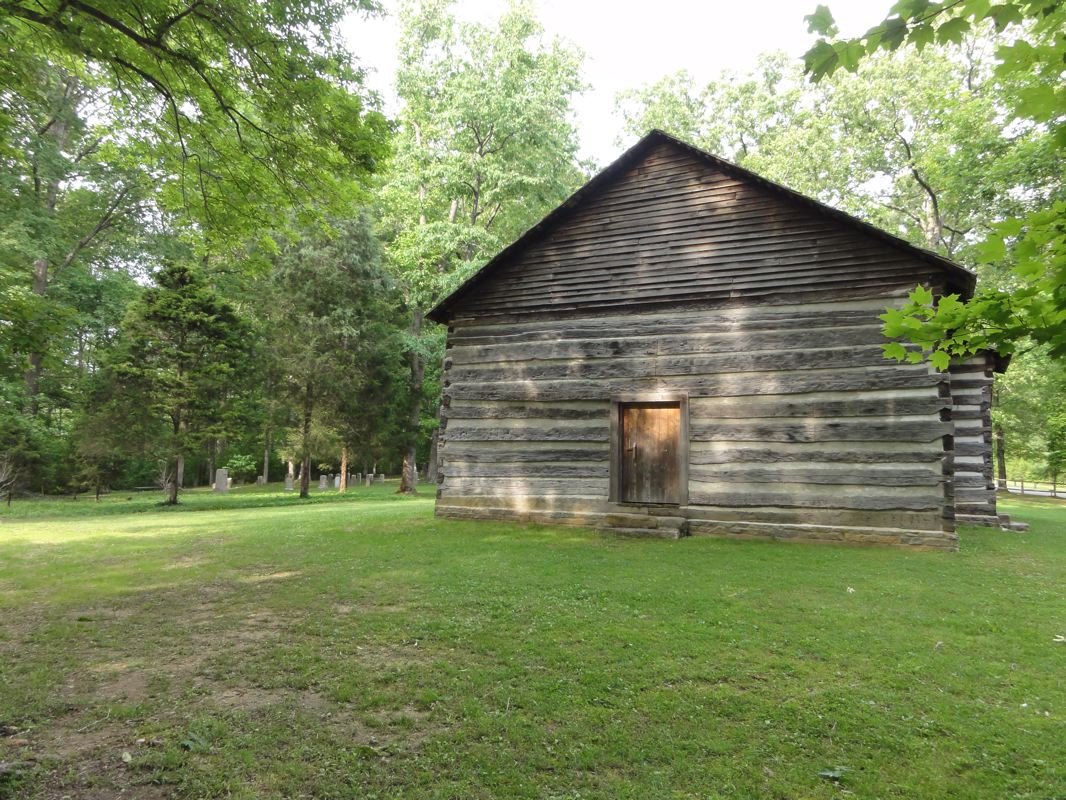
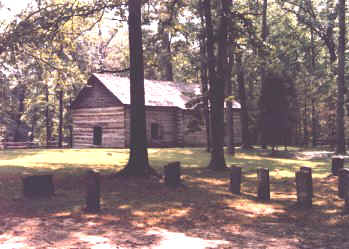
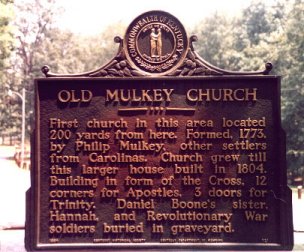
A Historical Sketch
Now "all you who believe as I do, follow me out the west door." The words reverberated through the rough-hewn beams of the Mill Creek Baptist Church. It was Saturday morning, November 18, 1809. The congregation of some two hundred had gathered for the last time and the words of John Mulkey were like a broad axe splitting the timbers of the Baptist traditions from top to bottom. All across Kentucky, Ohio, Tennessee and South Carolina, there were rumblings of discontent. Congregations were declaring themselves "separate" or simply "Christian Churches." The restoration plea was being heard throughout the Western Reserve. And fervent revivals brought thousands to a great awakening of religion on the American frontier.
John walked slowly to the right of the long pulpit that stood on the north side of the building.
Approaching the low door at the west end of the church, he bent slightly to clear the lintel and stepped out into the crisp air of the autumn morning. A snow had fallen leaving the ground a deep rust sprinkled over with a fine covering of white that resembled sugar. Gusts of wind were now blowing the frozen granules across the wooded cemetery where several Revolutionary War veterans lay resting from their struggle to win their country's independence. John looked out across the rough-hewn stones. He was trying to win some independence too. He wondered if the price would be as dear.
Presently, a few of the congregation closest to the west door began to rise from their puncheon pews. Hannah Pennington, sister of the famous Kentucky explorer Daniel Boone, along with Joseph Gist, Nathan Breed, Wm. Howard, and William M. Logan crossed the threshold and stood with Brother Mulkey in the small clearing. Others followed until one hundred-fifty of the two hundred present stood with their preacher in the gray light of a cold November morning in the county of Barren, the new state of Kentucky, some two miles and a half south of a small community called Tompkinsville.
The other fifty slowly filed out the east door of the church and stood talking quietly as if their plans were already made. Within half an hour they moved out toward their horses and buggies, and were last seen in a procession moving toward Tompkinsville. Within another six months a new Baptist church would be built, and a new congregation organized.
In the meantime, John Mulkey, the man with the majority, was in the canter of a religious controversy that would lead to the founding of the largest group of Christians ever organized on American soil.
Disciples of Christ historians have given little credit to John Mulkey, usually dismissing his work in a sentence or two. Yet, this outstanding pioneer preacher was one of the first voices heard on behalf of the Restoration Movement. The story of John Mulkey (spelled "Mulka" by several of his early ancestors) began in Connecticut during the time of the revival preached by George Whitefield (1739-1743).
Whitefield had baptized a young man by the name of Shubeal Stearns, who was later ordained in Tolland, Conn. in 1751. Steams left Connecticut for the southern part of the colonies and finally made his home at Sandy Creek, N.C. on November 14, 1755. It was Shubeal Stearns who baptized John Mulkey's grandfather Phillip. Phillip became an ordained minister of the Baptist Church, serving the Deep River congregation from 1759-1760. Later Phillip Mulkey moved to South Carolina where he organized the Broad River Baptist Church. Phillip's son Jonathan, also a Baptist minister, was one of the first resident pastors of Tennessee. Jonathan, who had married Nancy Howard. was preaching in South Carolina when John was born, January 14, 1773. His father and grandfather had served in the Revolution and from them John was to inherit a fierce love for independence. He, along with his brothers, Isaac, Phillip, and Jonathan, was reared on a diet of freedom and individualism that later marked him by his critics as "unstable and carried about by every wind of doctrine."
But if John was to be an "unstable" Baptist preacher he showed no signs of it when he and his brother Phillip came to the Tompkinsville community in 1798. Thirty years had passed since Daniel Boone and his party pushed through the Cumberland Gap. John and Phillip, using some of the same trails, migrated from the Holston Valley in East Tennessee to the country then known as Barren in Southern Kentucky.
John was assigned to the Mero District Baptist Association. During the same year his good friend Barton W. Stone received a call to the church of Cane Ridge and Concord in the northern part of the state. And in the following year Mulkey became Barren County's first minister to be granted license to perform marriages for the United Baptist Church. In the meantime, he had been successful in organizing the Mill Creek Congregation, no small feat considering the great distances separating families and the difficulty of holding regular services in a frontier country. During this same period he preached "On Pittman" Green County and in the Russells settlement in Adair County.
But
it was the Mill Creek congregation that occupied most of his attention. 'Me
Honorable Winfield S. Emmert writing to Reverend W. E. Thomas of Glasgow, Ky.,
perhaps in the late 1920's (the letter is not dated) stated: "From such
records as I have been able to obtain, they (the Mill Creek Church) met for a
while from house to house for worship. From what old people have told me they
built a rough, round log house about one hundred yards west of the present
house."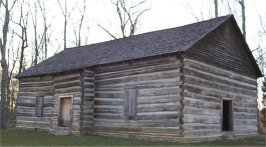
The earliest minutes of the church indicate that on the 15th of April, 1804 a committee of seven was appointed to erect a new meeting house. John Wood, Nathan Breed, James Harlin, Ephriam Ellis, Francis Baxter, Joseph Gist, and Thomas Sullivan were named to the committee. The next month the report was made that the building was to be fifty feet long, thirty feet wide, shingled with jointed shingles, with five windows and three doors. A man was to be hired to build it and, paid in trade by subscriptions.
Five years after the new log church was built, Mulkey was preaching in the home of William Sims on the Cumberland River. He had taken his text from the 10th Chapter of John, and was making a strong plea for predestination, when suddenly he became convinced by his own arguments that the doctrine was false. Of course this caused great confusion in the Mill Creek Church and led to several heresy trials in the Mero Association. Failing to gain a majority vote against him, the Church decided to "choose sides" which led to the division on that chilly Saturday morning, November 18, 1809.
But the separation was more than just a division among Baptists The new church would be organized on the basis of "the Bible alone," and J. H. Spencer in volume one of his History of the Kentucky Baptists writes, "For a number of years this church (Mill Creek) was very large and prosperous, but John Mulkey led off a large faction of the body to the Arians or Stonites, after a while another faction went off with the Campbellites and finally the remaining body split on the subject of mission in 1885."
Mulkey was a friend of both "Raccoon" John Smith and Barton W. Stone. Having lived in the same neighborhood with John Smith in Tennessee, Mulkey invited Smith on several occasions to preach at what was now becoming known as the "Mulkey Meeting House." On October 10, 1817, Stone wrote to Mulkey asking him to come to Cane Ridge for a communion service. Considering the distance and the fact that the trip would be made on horseback, this was more than a casual invitation from one preacher to another. Stone concludes by writing, " . . . my love to you remains unabated."
By the early 1830's, John Newton Mulkey, a son of John Mulkey, had preached his first sermon, a short discourse on the subject, "The Weekly Meeting Of The Church To Break Bread." Twenty years later this same John Newton Mulkey became the first evangelist employed by the Kentucky Christian Missionary Society for work south of Green River. He also served for a number of years as pastor of the First Christian Church in Glasgow, Kentucky.
In his book, Men of Faith, W.C. Rogers records that during the 53 years John Mulkey* preached in southern Kentucky and northern Tennessee, he delivered ten thousand sermons and baptized as many converts. At one meeting in Celina, Tennessee, be immersed 105 in five days..
Yet, beyond the long years of his ministry and the success of his evangelism, John Mulkey was not only a man with a majority in the 1809 controversy, but was a man with a majority of influence among his own family. His descendants have formed one of the significant families among the Disciples of Christ. Four of his six sons became ministers. His brother Phillip founded Mulkeytown, a Disciple community in southern Illinois. His grandson Aaron Hayes Mulkey helped to establish a Disciple colony in Kansas, and organized over 50 congregations in the Western states. The last member of this illustrious pioneer family to enter the ministry of the Disciples is Robert Mulkey who now serves our Grand Avenue Christian Church in Bozeman, Montana.
Web Master's Note: The Article above appeared in The Kentucky Explorer in February, 1993 under the title, "Old Mulkey Church Was One Of State's Earliest Pioneer Churches." The introduction of the article explains that Clayton E. Gooden, minister of West Creighton Christian Church, Fort Wayne, Indiana. The story appeared in the January, 1965 issue of Discipliana, the official magazine of the Disciples of Christ Historical Society. Many references to the name "Disciples," can be interchanged with "Church of Christ" or "Christian Church" before the 1880's. After these years, divisions took place, until when the three different designations applied to three different groups.
*Correction - W.C. Rogers recorded that John NEWTON Mulkey, the son of John Mulkey, delivered 10,000 sermons and baptized as many in his 53 years of preaching. (pgs. 226-227) Close friend and associate of John Mulkey, and writer of his obituary, Isaac T. Reneau, wrote to the Millennial Harbinger (March 5, 1845, p.380) and said John Mulkey also preached 10,000 sermons and baptized as many in his 51 years of preaching. Easily apparant is that both father and son were great and effective gospel preachers.
![]()
Historical Marker In The Park
John Mulkey was instrumental in the founding of Mill Creek Baptist Church. Moved here around 1797, he and his brother, Philip, began their work; John as the first pastor and Philip the first clerk. In 1804 the present Meetinghouse was built.
Over time and with much study, John Mulkey became concerned that elements of the Baptist doctrine were contrary to the Bible. He was forced to make a choice between holding to a doctrine that he believed was false or renounce the doctrine of his ancestors and restoring New Testament Christianity to this church. He chose the later.
On November 18, 1809, the Mill Creek Baptist Church congregation split over doctrine. Those members who sided with John were approximately 150 in number, as opposed to the 50 or so that chose to remain loyal to the Baptist tradition. John Mulkey's group retained the site and the Meetinghouse. The smaller group retained the name "Mill Creek Baptist" and the "Book of Records" from which the church's history is taken. (It is interesting to note that the group that continued as Mill Creek Baptist built their new meetinghouse just a short distance from here, the same size and shape as this on. That log structure was eventually encased by weatherboard and then brick as the congregation continued into modern times. Mill Creek Baptist still meets in this building today.)
John and his followers sought to abandon human creeds, doctrines and church names in an effort to restore New Testament order in their thinking and practice. They aspired to be the church of Christ that is written about in the Bible. Note the words of John Mulkey speaking of his confidence and purpose: "Finally our light will shine and truth will prevail. Indeed, brethren, we have reason to rejoice that notwithstanding the floods of opposition and torrents of abuse that have poured for the from various quarters, yet truth is prevailing. Gospel light is shining. Error and sectarian bigotry is in many instances giving way, and the kingdom of the Redeemer is spreading . . ."
John and his followers left no written record of the church which they established here. Exactly what they called the church is unknown. Local history teaches the site was simply "Old Mulkey's Meetinghouse" and that services were held here until approximately 1856. . .twelve years after John Mulkey's death. At that time, for reasons unknown the congregation abandoned the Meetinghouse and met in the basement of the courthouse. When all the original members had died the remainder of the congregation reportedly moved their local membership to the Church of Christ in Tompkinsville.
John Mulkey was viewed as a heretic by the Baptists of the time. Yet he found plenty of "New Light" congregations in which to preach until he retired in 1841. He preached throughout lower east Tennessee and northern Alabama. He knew personally many of the leaders of the restoration movement such as Barton Stone, Samuel DeWhitt, Isaac Reneau, David Haggard and others. Many religious historians believe he and this congregation played a much larger role in the restoration movement than they are given credit for. Oddly, John Mulkey was laid to rest on his family farm rather than here in view of the pulpit from which he made his famous stand.
![]()
Location/Directions
From Nashville: North of Nashville on I-65 cross over into Kentucky and take the second exit which should be the Franklin exit. At the exit turn right on Hwy 100. The road has some pretty rough turns but after 60 miles you will come into Tompkinsville. Then follow the signs a couple miles south of town.
From Knoxville: Take I-40 East to Cookeville Exit #288. This will be highway 111 & 42. Head north toward Livingston, Tennessee. Go about 20 miles, and as you enter Livingston, Hwy 42 will turn left and by-pass downtown. Go a couple miles on the by-pass and turn left on Hwy 52 heading toward Celina. Travel 18 miles and follow the Hwy 52 signs all the way through Celina (goes through the downtown area). From Celina travel 8.5 miles crossing the Cumberland River toward Moss. As you pass through Moss the road will fork. Hwy 52 goes back to the left and Hwy 53 goes straight ahead. Go straight on Hwy 53 heading north 1.9 mile to the Kentucky State Line. Continue another 10 miles into Kentucky on what has now become Hwy 163. (Hwy 53 in Tennessee = Hwy 163 in Kentucky). In Tompkinsville turn left on Hwy 100 and go a few blocks. Look for a sign to turn left to go to the meetinghouse. About 2 miles south of town. The actual GPS location of the Mulkey Meetinghouse is: 36°40'39.3"N 85°42'27.5"W / or D.d. 36.677583, -85.707650.
![]()
The Boone Society
HANNAH BOONE PENNINGTON
In Memory of
Hannah Boone, born 24 August 1746, sister of Daniel
Boone, and wife of Revolutionary War soldier Richard
Pennington, who served at Enoch Osborne's Fort in
Virginia, died near here on 9 April 1828. The family
arrived at Mill Creek in 1798 from Fayette Co.,
Kentucky, after leaving Wilkes County, North Carolina.
They joined their friends John and Phillip Mulkey at
Old Mulkey Meetinghouse and worshipped here. Hannah
and Richard Pennington were married by John Mulkey
in 1777 in North Carolina. The Pennington children
were Joshua, Daniel Boone, John Stewart, and Abigail.
Hannah first married John Stewart in 1765 and had
four daughters, Sarah, Mary, Rachael, and Elizabeth.
This monument is placed in her honor and memory by
descendants and The Boone Society April 2003.
Joyce Nell Beck Truitt.
Carolyn Rankin Compton &
Rexene Ashford Ornauer
4th Great-Granddaughters. Committee
Old Mulkey Church
First church in this area located
200 yards from here. Formed, 1773,
by Philip Mulkey, other settlers
from Carolinas. Church grew till
this larger house built in 1804.
Building in form of the Cross, 12
corners for Apostles, 3 doors for
Trinity. Daniel Boone's sister,
Hannah, and Revolutionary War
soldiers buried in graveyard.
click on panoramic shots to see close up
Squire Boone
Born in Penn.
Oct. 5, 1744
Died In Indiana
Built Traveler's Rest
Squire Boone, Jr. was the younger brother of Daniel Boone and Hannah Boone Pennington.
He died August 5, 1815, and was buried in a cave in Maulkport, Harrison County, Indiana.
The marker here is in his honor.
Hannah Boone
Born In
Berks County, PA
Aug. 24, 1746
Died In
Monroe County, Ky.
1828
Elder J.N. Mulkey
Departed This Life
Sept. 26, 1882
76 Yrs. 7m's & 15D.
Why lament the Christian's dying,
Why indulge in his tears or gloom,
Calmly on his Lord relying,
He has met the opening tomb.
Hark, the golden harps are ringing,
Sounds celestial fill his ear,
Millions now in heaven singing,
Greeting his joyful entrance there.
The South Door On Left
The South Door In Middle
View From RearOf Building (Western Door)
This was the door out of which Mulkey departed with 150 of the 200 members of the congregation
determining to take the Bible alone for final authority - November 18, 1809.
![]()
Other Related Sites: John Mulkey, John N. Mulkey, &
Graveyard at Mulkey Meeting House
![]()
